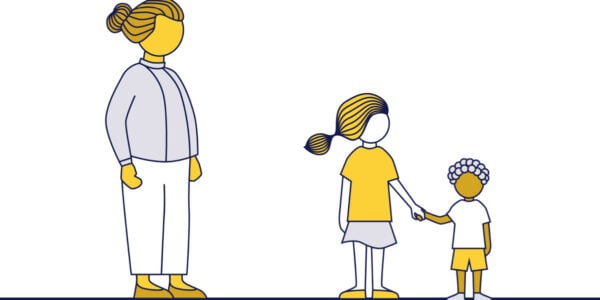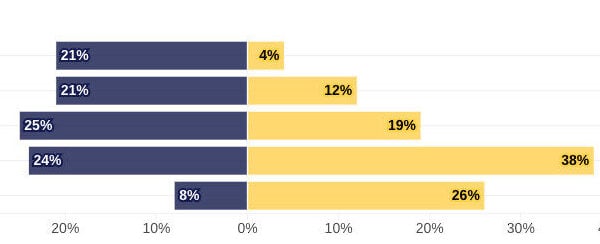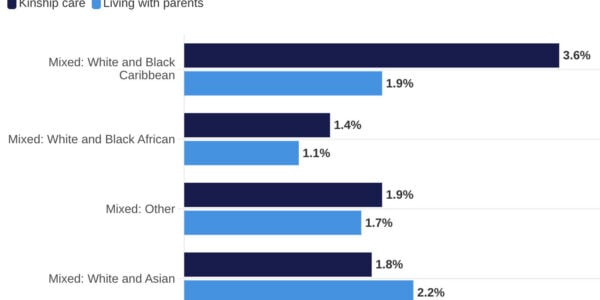About this blog
This blog explores whether the ethnic inequalities uncovered in public law extend to section 20 voluntary arrangements, and explains why further research to understand ethnic inequalities is critical.
By drawing attention to important findings from recent research and highlighting areas which have so far been under-explored, we hope to inspire curiosity and reflection among both professionals and academics – ultimately stimulating further research in this area on a journey to understanding how a child or family’s ethnicity affects their experience of the family justice system.
Ethnic inequalities in public law proceedings exist, though no research has yet examined the factors that explain them. At Nuffield Family Justice Observatory, we have previously published research that used Cafcass data – which provides information on children in court proceedings – to document ethnic inequalities in legal outcomes (legal orders, duration of proceedings and repeat court use) of children in care proceedings.
But court is not the only route to becoming a looked after child. A local authority in England can accommodate a child under section 20 of the Children Act (CA) 1989. A child accommodated under section 20 is ‘looked after’ and the local authority must meet all of their statutory duties as such. A local authority cannot accommodate a child under section 20 if a person with parental responsibility objects and for this reason it is widely known as a voluntary arrangement. Given what we now know about ethnic disparities in public law proceedings, it is important to see whether this extends into the use of section 20 voluntary arrangements for children of different ethnicities.
Data obtained from a Freedom of Information (FOI) request to the Department for Education (DfE) suggests this is the case. Figure 1 shows at the 31st March 2022 in England, 10 percent of White and 10 percent of Mixed or Multiple ethnicity children were looked after under a section 20 voluntary arrangement. This is lower than the 16 percent of Black children, almost 20 percent of Asian children and 21 percent of children belonging to any other ethnic group (this includes children who do not identify in any of the previously mentioned ethnic group categories. The number of children in this category is small in size). In the case of Asian and Other ethnicity children they have nearly double the rate of White children on a section 20.
The reasons why Asian, Black and Other ethnic groups have higher proportions of children on a voluntary arrangement are unclear and likely multi-faceted. Potential explanations may centre around a lack of consent from parents, social worker practice, differences in the complexity of cases, or regional differences in the use of section 20 that also reflect the ethnic composition of these regions. Testing some of these theories with the available data is challenging but case file analysis could help find more answers.
Children’s experiences of social services may be related to the use of section 20. A DfE report showed that Black and Asian children enter care more quickly following a referral to children’s social care. An important question is whether this is driven by greater use of voluntary arrangements which may negate the use of lengthier care proceedings. In addition, the report finds a lower proportion of Black and Asian children have any social care involvement in the month prior to becoming looked after. This raises the question whether voluntary arrangements are used more frequently in cases with no previous social care intervention which reflects an urgency in these cases. Access to longitudinal CLA census data could help to understand how involvement with children’s services might relate to the use of section 20.
As highlighted in our recently published spotlight paper on ethnicity and the family justice system, there are important questions that remain under-explored yet important avenues for future research. Understanding why section 20 voluntary arrangements differ for certain ethnic groups is another critical gap.





